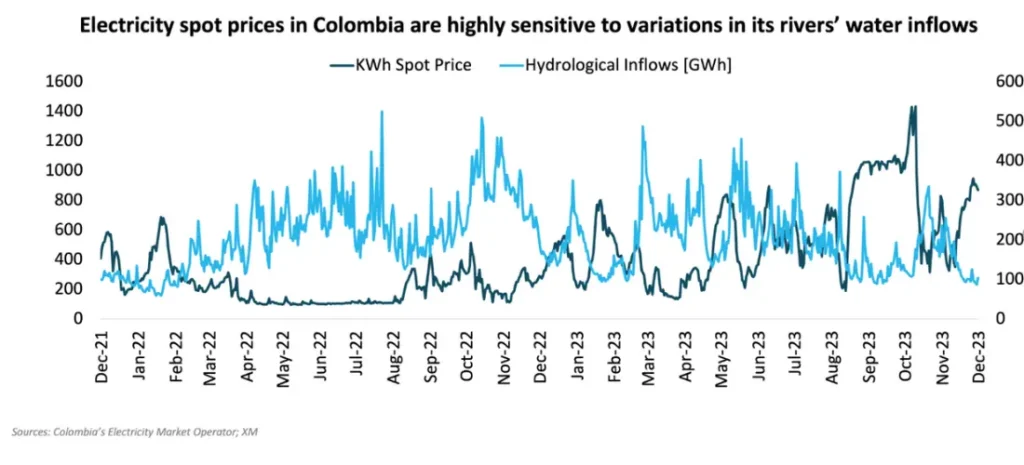
The Board of Directors at the Central Bank of Colombia is actively monitoring the potential repercussions of the El Niño climate phenomenon on the productive sector. The elevation of sea surface temperatures in the central and eastern equatorial Pacific Ocean, attributed to El Niño, induces disruptions in conventional weather patterns, precipitating global climatic shifts, including deviations in precipitation and extremes of temperature.
A noteworthy reduction in Colombia’s hydrology and reservoir levels carries the potential to escalate the spot price of electricity, which could drive up consumers’ service bills. Should the spot price surpass the scarcity price, there is a likelihood of heightened reliance on fuels for electricity generation.
The directors of Colombia’s central bank are anticipating moderate impacts from El Niño during the initial quarter of 2024. Further inflationary pressures are also expected in food and energy due to the approval of a “health tax” on ultra-processed and sugary products, the adjustment of fuel subsidies, and a significant increase—at least 12%—to the minimum wage.
Our View
Electricity sold on the spot market represents about 30% of the total electricity traded in Colombia. Therefore, further increases in spot prices will have an impact on consumers’ service bills, especially after February when reservoir levels begin to decrease due to the prolonged summer, which usually lasts from early December to late March.
Consumers in regions such as Colombia’s Caribbean Coast, where commercial agents have a larger exposure to spot prices, could face an even harsher increase in their electricity bills.
Despite the entrance of HidroItuango—the largest hydropower facility built in the country, which adds an additional 1.2 GW of power generation capacity—its water-edge dam cannot hold water as a reservoir. As a result, its actual generation could be severely reduced if the flow of the Cauca River is greatly diminished.
In general terms, Colombia has enough electricity generation capacity to alleviate moderate El Niño effects and avoid rationing. The US National Oceanic and Atmospheric Administration has also indicated that surface temperatures in the Pacific Ocean remain above average. However, ocean warming has abated since early December.
We maintain our inflation forecast of 6% for 2024; however, it remains subject to reassessment should additional inflationary pressures emerge. These could stem from the influence of El Niño on hydrology, a substantial elevation in the national minimum wage, or a noteworthy reduction in government subsidies for fossil fuel demand.
At FrontierView, our mission is to help our clients grow and win in their most important markets. We are excited to share that FiscalNote, a leading technology provider of global policy and market intelligence has acquired FrontierView. We will continue to cover issues and topics driving growth in your business, while fully leveraging FiscalNote’s portfolio within the global risk, ESG, and geopolitical advisory product suite.
Subscribe to our weekly newsletter The Lens published by our Global Economics and Scenarios team which highlights high-impact developments and trends for business professionals. For full access to our offerings, start your free trial today and download our complimentary mobile app, available on iOS and Android.
